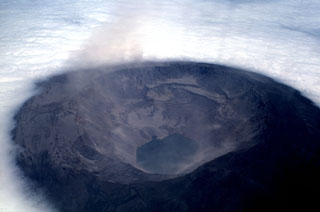Report on Fernandina (Ecuador) — 22 January-28 January 2020
Smithsonian Institution / US Geological Survey
Weekly Volcanic Activity Report, 22 January-28 January 2020
Managing Editor: Sally Sennert.
Please cite this report as:
Global Volcanism Program, 2020. Report on Fernandina (Ecuador) (Sennert, S, ed.). Weekly Volcanic Activity Report, 22 January-28 January 2020. Smithsonian Institution and US Geological Survey.
Fernandina
Ecuador
0.37°S, 91.55°W; summit elev. 1476 m
All times are local (unless otherwise noted)
A reported from IG on 23 January noted that seismicity increased after the approximately nine-hour long 12 January eruption at Fernandina, characterized by sporadic earthquakes with magnitudes greater than 3 and small swarms. The strongest earthquake was a M 4.2 recorded on 21 January. Most of the earthquakes were shallow though occasionally some were located at depths greater than 10 km. Deformation of about 35 cm was detected around the fissures that produced the lava flows. The lava flows emitted on 12 January covered an approximate area of 3.8 square kilometers; no new thermal anomalies nor gas emissions have been recorded since the eruption.
Geological Summary. Fernandina, the most active of Galápagos volcanoes and the one closest to the Galápagos mantle plume, is a basaltic shield volcano with a deep 5 x 6.5 km summit caldera. The volcano displays the classic "overturned soup bowl" profile of Galápagos shield volcanoes. Its caldera is elongated in a NW-SE direction and formed during several episodes of collapse. Circumferential fissures surround the caldera and were instrumental in growth of the volcano. Reporting has been poor in this uninhabited western end of the archipelago, and even a 1981 eruption was not witnessed at the time. In 1968 the caldera floor dropped 350 m following a major explosive eruption. Subsequent eruptions, mostly from vents located on or near the caldera boundary faults, have produced lava flows inside the caldera as well as those in 1995 that reached the coast from a SW-flank vent. Collapse of a nearly 1 km3 section of the east caldera wall during an eruption in 1988 produced a debris-avalanche deposit that covered much of the caldera floor and absorbed the caldera lake.
Source: Instituto Geofísico-Escuela Politécnica Nacional (IG-EPN)

